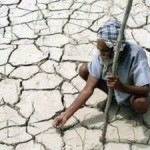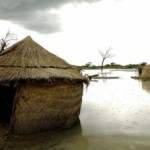This confirms that there was no glacier around the temple till AD 850. The earliest evidence of glacial activity recognized by Larocque and Smith[16] in the 7th century at Tiedemann glacier, Mt Waddington area, British Columbia Coast Mountains, Canada does not hold good at least for the Himalayas. At the same time, they have mentioned that most of the Little Ice Age evidences have recorded events in the 15th to 18th centuries. However, glacier advances in the European Alps as early as the mid-14th century are considered as the beginning of the Little Ice Age (Figure 7), and major advances took place during this period[17]. According to Grove[18], the Little Ice Age is a widely used term for the period AD 1300–1900 (which is notable for worldwide glacier expansion). We consider that glaciations in the region started during the mid-14th century, i.e., the beginning of the Little Ice Age and continued till around AD 1748 (as calculated by lichenometric dating). After the peak of the Little Ice Age, recession of the glacier was followed by its three major stages of advance and retreat as indicated by the four loops of terminal and lateral moraines of the glacier. This further suggests that the temple remained submerged in ice/glacier for a minimum of 400 years. Since the temple is made up of thick, strong, rock walls and pillars, it could withstand submergence in the glacier for such a long period.

The submergence of the temple is further supported by the striations found on its walls (Figure 8). Even the inner walls of the temple have been polished and striated by the glacier. The orientation of these striations is in the direction flow of the glacier; or in other words, these striations confirm the direction of flow of the glacier. These striations were formed when the glacier, during its movement, picked up sediments on its travel, either by abrasion or by plucking of the boulders/base rocks that come in its way. These sediments, being under great pressure from above due to the weight of the glacier, scratched the walls (formed by big rock bricks) of the temple by abrasion during the glacier movement. These striations are mostly multiple, parallel lines which represent movement of sediments loaded over the base of the glacier. They range from 1 to 2 mm depth, with wide markings on the walls of the temple (Figure 8).

Glaciers and small ice caps in the temperate environment are sensitive indicators and react even to the slightest change in temperature. They provide reliable information on historical temperature changes. Mountain glaciers provide a valuable tool for the reconstruction of Holocene climatic changes. They give valuable information about different reactions of the glaciers to fluctuations in the climate, as these can be expected during any future climate changes as well. At present, evidence of Little Ice Age glacier fluctuations comes from Europe, primarily due to the availability of historical documents and instrumented data that last over hundred years. In other places, like the Himalayas, New Zealand, etc., the absence of historical records older than AD 1850 has led to derivation of Little Ice Age chronology by dating moraines using tree-ring records, lichenometry and Schmidt hammer measurements[19–21].
Mounting evidences now suggest that the period between AD 1750 and 1800, rather than the late 19th century represented the culmination of the Little Ice Age in Iceland[22]. It has been concluded that Lambatungnajokull, an outlet glacier of Vatnajokull ice cap in Iceland, has responded dynamically to Late Holocene climate change[22]. Focusing on the past 400 years, the glaciers grew in size between AD 1600 and 1700, as recorded in medieval documents. It probably continued during much of the 18th century. The glaciers reached the greatest Little Ice Age extent in the 18th century, probably between AD 1780 and 1795. Since then, they have undergone an overall retreat punctuated by numerous advances and retreats. McKinzey et al.[23] stated that despite the range of possible dates for the Franz Josef Glacier, New Zealand, the most cited[24–29] Little Ice Age is AD 1750.













